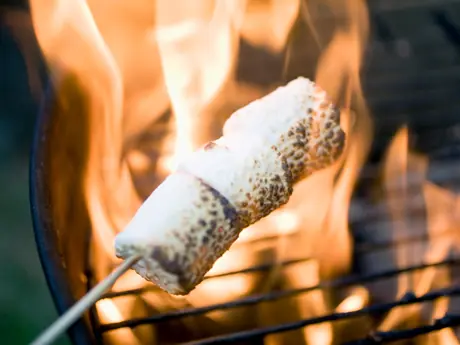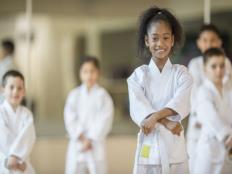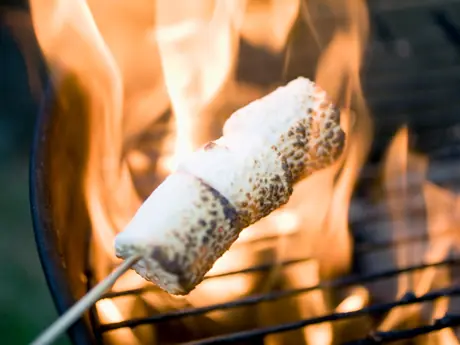
Kids love learning new tasks, and parents love when their children can make themselves a simple meal. My own children have always been more likely to eat a healthy dinner when they help make it, so having them in the kitchen with me is not only helpful; it helps encourage healthy choices as well.
It hasn't always been that way though. The beginning stages of introducing kids to cooking involves a careful eye for safety and a lot of cleanup afterwards. Kids love being in the kitchen, but they also love spilling flour everywhere and cracking eggs all over the counter.
Include Kids in Meal Preparations
Kids need to be comfortable in the kitchen, and parents need to be comfortable with the kids in that space. Have conversations about knife, stove and oven safety so your kids can avoid injuring themselves when helping.Consider including kids in meal planning by letting them pick a new produce item for the family to try or allowing them to plan the dinner menu one night. Use the exercise to discuss well-rounded meals and to ensure reasonably healthy choices are being made. Pizza for dinner? Great! Consider whole wheat crust and talk about what food groups are included in the recipe. Make the pizza at home and have a variety of topping choices for each person to choose. Pair it with a vegetable or green salad to keep it reasonably healthy.
Talk to kids about proper food storage and hand hygiene. Discuss what foods can be consumed raw and what needs to be cooked thoroughly. Even when they are too young to do much cooking themselves, talk to them about what you're doing. "I'm chopping onions to put in the soup," or "I'm combining the dry ingredients with the wet ingredients. Then you can help me stir."
Start Simple
Preschoolers and early elementary-aged kids can do a surprising number of culinary tasks. They can:
• Wash fruits and vegetables
• Peel and cut softer foods like hard boiled eggs and bananas
• Pour (non-boiling) liquids and measure dry ingredients
• Stir and mix batters
• Make a sandwich
• Grease pans
• Mash potatoes
Don’t forget cleanup! Part of cooking is tidying up afterwards, so kids can and should help:
• Wash the dishes
• Sweep the floor
• Wipe down the counters
Turn up the Heat
Eventually, your kids will be ready to heat up foods like soup and oatmeal in the microwave, make toast and cook scrambled eggs. Revisit the safety expectations, monitor to avoid any burns and don't let them use your good skillet because that first batch of scrambled eggs may never come off.
This is also the stage where kids can be shown how to handle sharper kitchen utensils like knives, peelers and graters, and can use the kitchen shears to chop herbs. Watch a video to show kids how to use the claw method to hold whatever they're cutting so they know how to protect their fingers.
Kick It up a Notch
When your kids are ready for more, find simple recipes online for them to try. Talk about reading the entire recipe before beginning to ensure all ingredients and necessary supplies are on hand. Give them space to work the process themselves but stay close to make sure they don't burn the dish—or the house down! Recent dishes made by my 9-year-old include Jell-O, ramen with mixed vegetables and home-fried potatoes. An adult helped her with boiling the liquids, but otherwise she was a one-girl show.
Kids need reminders, so knife safety, oven and stove safety and basic kitchen rules should be reinforced multiple times. Teach your own personal family rules. For example, my kids aren't allowed to cook without an adult in the house.
Consider enrolling your budding chef in an age-appropriate cooking class. They'll have fun and will come home with recipes and skills that will surprise and delight you.
Cooking with kids isn't just a great way to teach self-sufficiency. Food is a powerful component in culture and family, and in many ways food is an expression of love. Giving children the skills to cook is a gift they can enjoy throughout their entire life.
READ THIS NEXT: 6 Healthy Recipes Your Kids Can Prepare





Discuss This Article